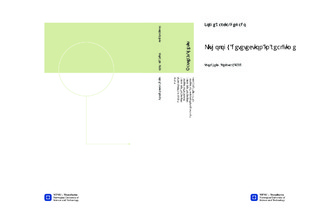Lithology detetection in real time
Master thesis
Permanent lenke
http://hdl.handle.net/11250/239958Utgivelsesdato
2013Metadata
Vis full innførselSamlinger
Sammendrag
The works published until today about lithological interpretation in drilling, use the ROP, rate of penetration, as the base for the diagnosis. These analyses are poorly detailed and often limited to distinction between hard and soft layers. This thesis establishes a direct relationship between lithology and drillability, using well data from Gullfaks 34/10 C-47. This relationship provides the basis for standardization of the parameter. The model was made from the equation relating the ROP to WOB, weight on bit; RPM, revolutions per minute; and K, drillability at each point. The values for each drilling point were obtained from C-47 data and after being treated, they generated the graph which enabled numerical association between K and lithology. The main difficulty which was presented was the standardization of K. The formula for the model does not account for the size and type of bit causing different values of the ratio K-lithology in each of the sections; additionally, in overpressured areas K values are unreliable. However, it is possible to establish a relationship between the K values from the different sections allowing the estimation of the theoretical value of K for a lithology which is not present in a section. The parameter K enables better lithological interpretation than simply using ROP. The use of this new parameter only requires a software implementation in existing equipment, so it does not require a large investment in time and money for its operationalization. The next step for widespread application is the refinement in obtaining the parameter by using other factors which influence it.
